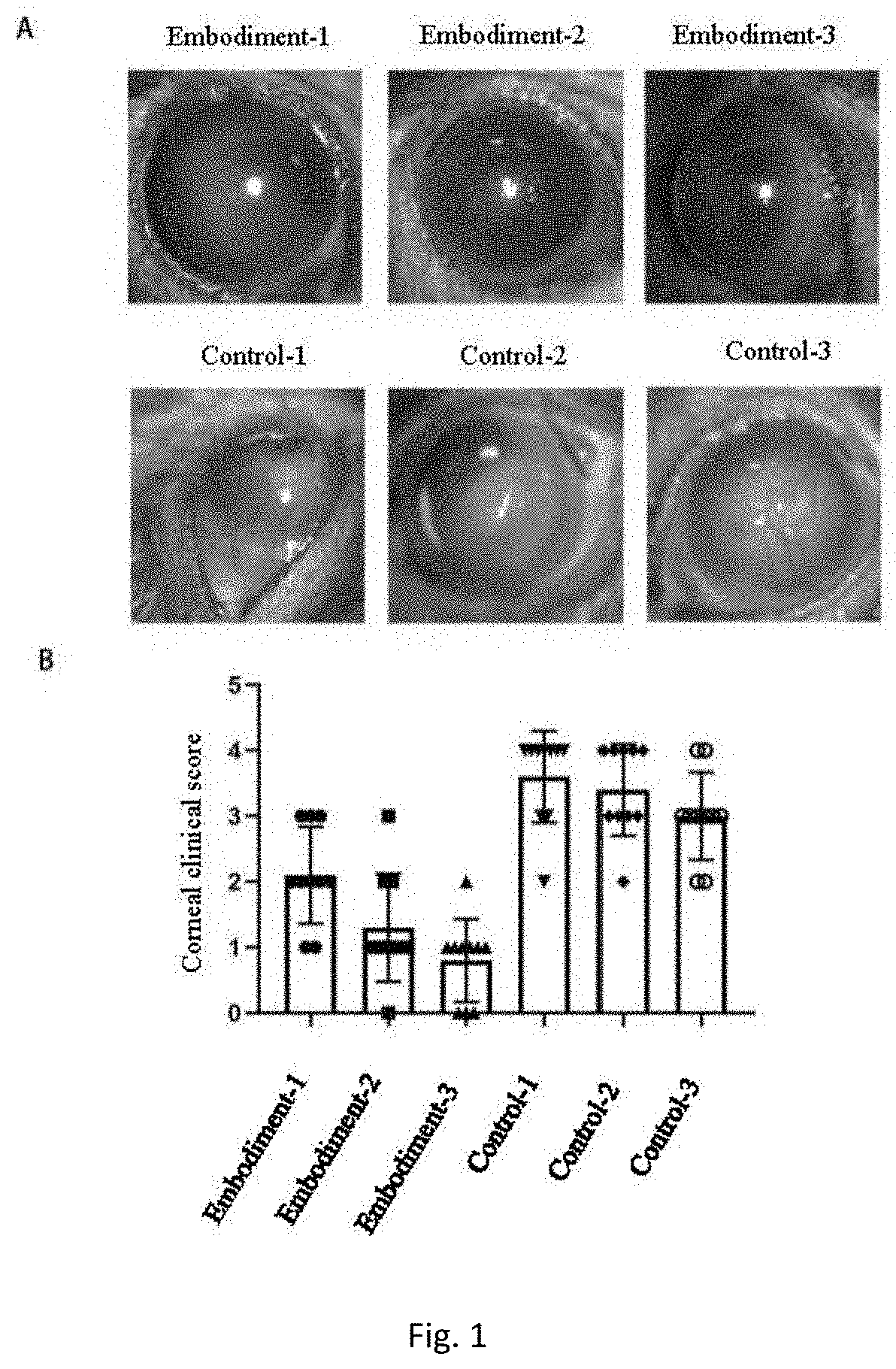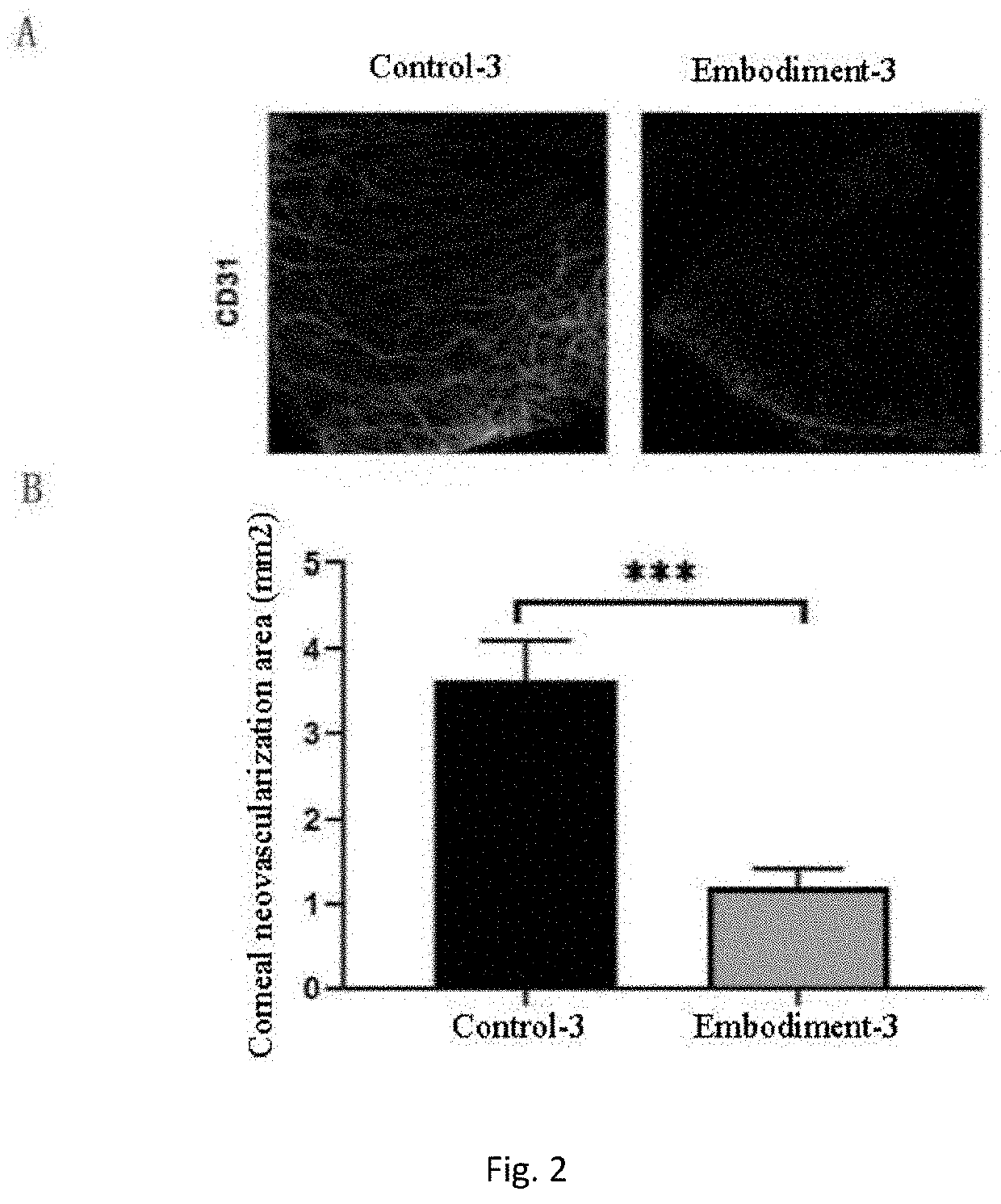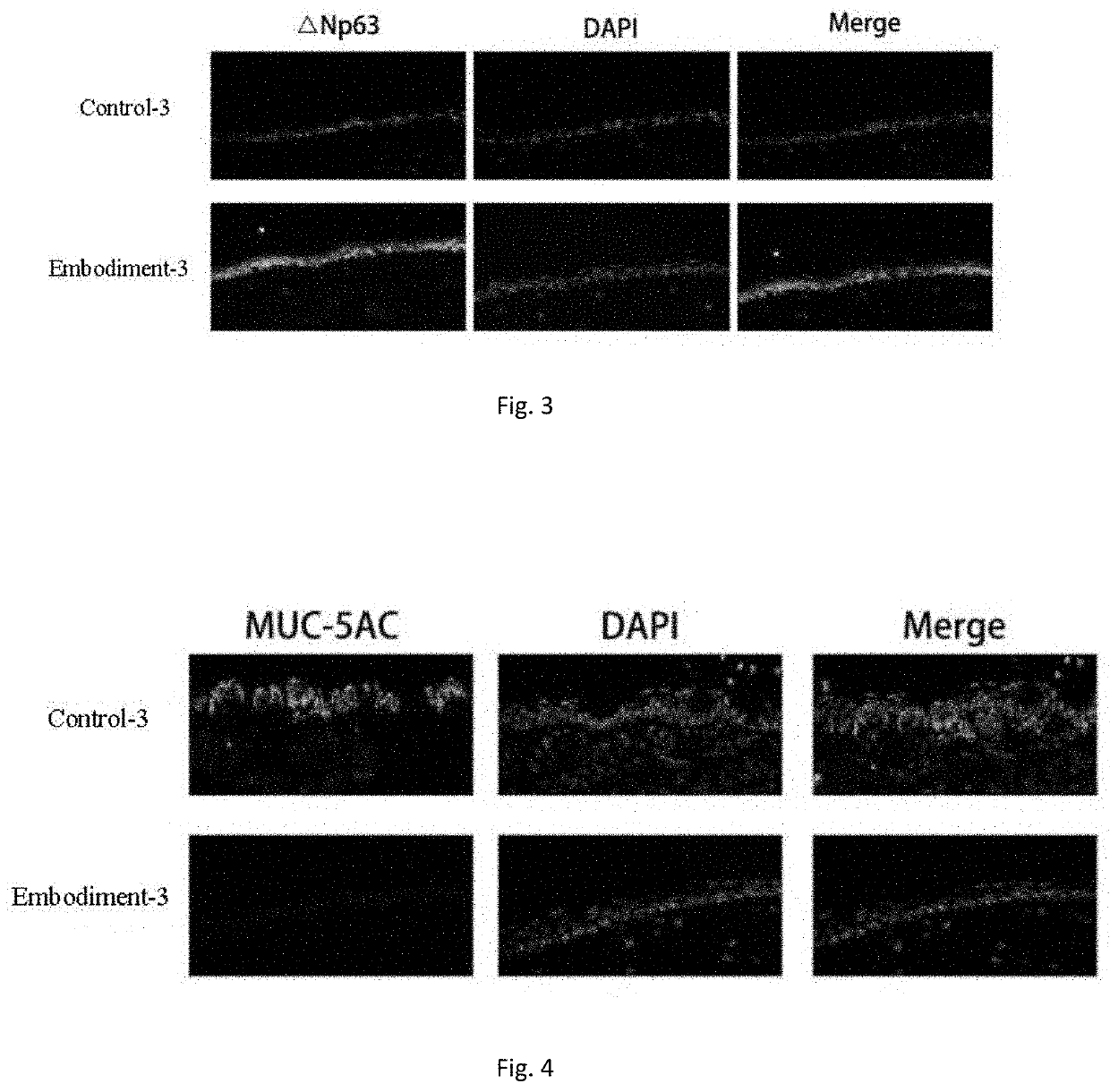Eyedrop applicable to limbal stem cell deficiency and preparation
a technology eyedrops, applied in the field of medicine, can solve the problems of limbal stem cell deficiency, decompensation of the number and function of limbal stem cells, corneal stroma scarring, etc., and achieve the effects of reducing the economic burden of users, convenient carrying, and low cos
- Summary
- Abstract
- Description
- Claims
- Application Information
AI Technical Summary
Benefits of technology
Problems solved by technology
Method used
Image
Examples
embodiment 1
[0056]Each liter of an eyedrop applicable to limbal stem cell deficiency included the following components:
[0057]1 mg of the human adipose-derived stem cell exosomes, excipients: 0.5 g of the sodium hyaluronate, 1 g of the vitamin B6 and 0.05 g of the benzalkonium chloride, and the balance of normal saline for injection, and a pH of the eyedrop was 7.0.
[0058]A preparation method of the above eyedrop included the following steps:[0059](1) preparation of human adipose-derived stem cell exosomes: third-generation human adipose-derived stem cells were selected and were cultured in a thermostatic cell incubator with CO2 at volume concentration of 5% at 37° C. by using a stem cell growth medium until 80% of the cells were fused, the cells were cultured by using an MEM stem cell basic growth medium instead of the stem cell growth medium for 48 h and cultured in the thermostatic cell incubator with CO2 at volume concentration of 5% at 37° C., a culture supernatant was collected, exosomes we...
embodiment 2
[0062]Each liter of an eyedrop applicable to limbal stem cell deficiency included the following components:
[0063]10 mg of the human adipose-derived stem cell exosomes, the excipients: 1 g of the sodium hyaluronate, 2 g of the vitamin B6 and 0.1 g of the benzalkonium chloride, and the balance of normal saline for injection, and a pH of the eyedrop was 7.0.
[0064]A preparation method of the above eyedrop included the following steps:[0065](1) preparation of human adipose-derived stem cell exosomes: third-generation human adipose-derived stem cells were selected and were cultured in a thermostatic cell incubator with CO2 at volume concentration of 5% at 37° C. by using a stem cell growth medium until 80% of the cells were fused, the cells were cultured by using an MEM stem cell basic growth medium instead of the stem cell growth medium for 48 h and cultured in the thermostatic cell incubator with CO2 at volume concentration of 5% at 37° C., a culture supernatant was collected, exosomes ...
embodiment 3
[0068]Each liter of an eyedrop applicable to limbal stem cell deficiency included the following components:
[0069]20 mg of the human adipose-derived stem cell exosomes, excipients: 2 g of the sodium hyaluronate, 3 g of the vitamin B6 and 0.3 g of the benzalkonium chloride, and the balance of normal saline for injection.
[0070]A preparation method of the above eyedrop included the following steps:[0071](1) preparation of human adipose-derived stem cell exosomes: fourth-generation human adipose-derived stem cells were selected and were cultured in a thermostatic cell incubator with CO2 at volume concentration of 5% at 37° C. by using a stem cell growth medium until 80% of the cells were fused, the cells were cultured by using an MEM stem cell basic growth medium instead of the stem cell growth medium for 48 h and cultured in the thermostatic cell incubator with CO2 at volume concentration of 5% at 37° C., a culture supernatant was collected, exosomes were extracted by means of gradient ...
PUM
| Property | Measurement | Unit |
|---|---|---|
| pH | aaaaa | aaaaa |
| concentration | aaaaa | aaaaa |
| concentration | aaaaa | aaaaa |
Abstract
Description
Claims
Application Information
 Login to View More
Login to View More - R&D
- Intellectual Property
- Life Sciences
- Materials
- Tech Scout
- Unparalleled Data Quality
- Higher Quality Content
- 60% Fewer Hallucinations
Browse by: Latest US Patents, China's latest patents, Technical Efficacy Thesaurus, Application Domain, Technology Topic, Popular Technical Reports.
© 2025 PatSnap. All rights reserved.Legal|Privacy policy|Modern Slavery Act Transparency Statement|Sitemap|About US| Contact US: help@patsnap.com



